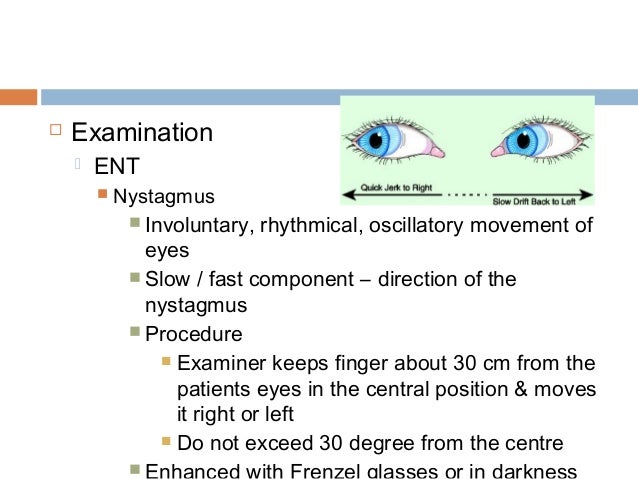

Positive head impulse test video can be viewed here. A normal (negative) test strongly indicates a central cause.An abnormal (positive) test as indicated by overshoot + corrective saccades is suggestive but not conclusive of peripheral vertigo.The patient’s eyes are observed for “overshoot” and saccadic adjustment (eyes continue to travel in the direction of rotation then correct suddenly) – this constitutes a positive test. With the patient sitting opposite the examiner and looking at the examiner’s nose, the patient’s head is rotated laterally 20-30 degrees, then rapidly returned to midline. The Head Impulse Test assesses the vestibulo-ocular reflex. If any portion indicates a central cause, further evaluation for stroke or central pathology is indicated (e.g. 2009) It consists of three components: Head Impulse test, Nystagums and Test of Skew. The HINTS exam appears more sensitive for stroke than early MRI. This is because abnormalities in vestibulo-ocular reflex may be the only abnormal neurological finding in patients with cerebellar infarcts. In patients with continuous vertigo and otherwise normal neurological examination, the HINTS exam should be performed. Presence of cerebellar signs should prompt further evaluation for posterior circulation stroke, preferably with MRI.Ī good video summary of cerebellar examination is found here. Gait or truncal ataxia – cerebellar disease causes broad stance, staggering, and the patient may fall to side of lesion.dysdiadochokinesia suggests a cerebellar lesion). flipping one hand on the other or rapid foot tapping. Finger-to-nose test, or heel-to-shin test (looking for past-pointing or intention tremor).In cerebellar disease, there is loss of antagonist muscle response and the limb shoots above the original position). Rebound test: as above, the patient is asked to keep their arm in position whilst the examiner pushes downwards then suddenly releases.Pronator drift: eyes closed with arms outstretched and supinated – a slow upward drift in one arm suggests a contralateral cerebellar lesion.ask the patient to repeat “the British Constitution”, “42 West Register Street”. Assess for scanning speech (patients with cerebellar lesions break complex phrases into individual syllables): e.g.The physical examination should aim to identify cerebellar signs, which are tested as follows: Multiple risk factors for ischaemic stroke (AF, diabetes, hypertension, CCF, previous CVA).Sudden head, neck or facial pain (carotid or vertebral dissection, intracranial haemorrhage).Fever and ear pain suggests bacterial labyrinthitis.Hearing loss, tinnitus suggests vestibular neuronitis / labyrinthitis / Meniere’s.Gradually progressive: tumour, demyelination.Continuous vertigo, also known as acute vestibular syndrome is suggestive of acute peripheral vestibulopathy – vestibular neuritis, labyrinthitis, or cerebellar lesion.

Positional, intermittent vertigo is suggestive of BPPV.

History Is the vertigo continuous or intermittent? cerebellar or brainstem stroke, vertebro-basilar insufficiency, multiple sclerosis, drug toxicity). Central vertigo (caused by lesions of the CNS, e.g.BPPV, labyrinthitis, Meniere’s disease, acoustic neuroma).



 0 kommentar(er)
0 kommentar(er)
